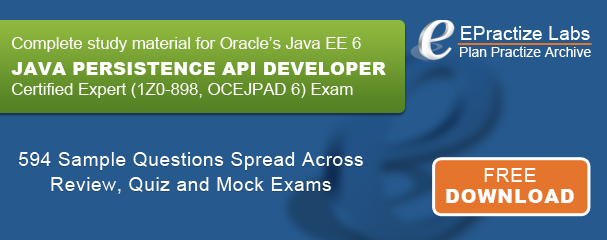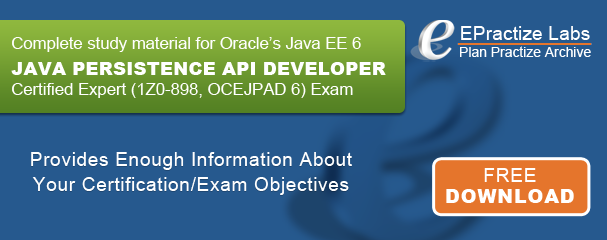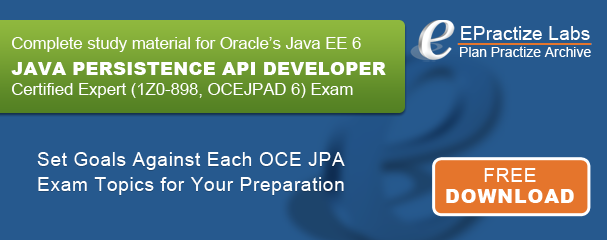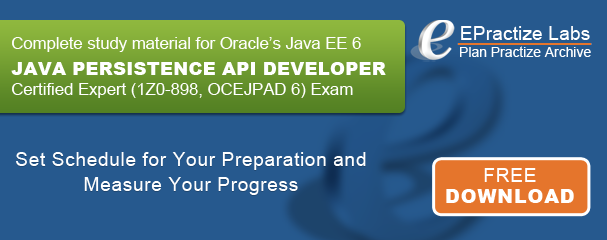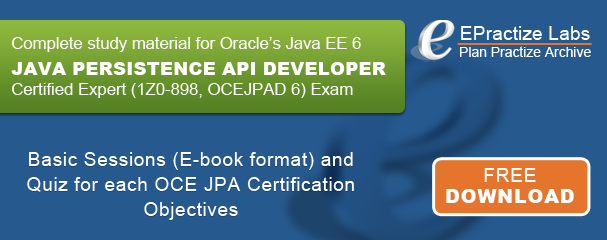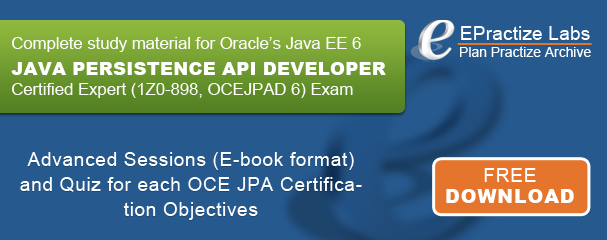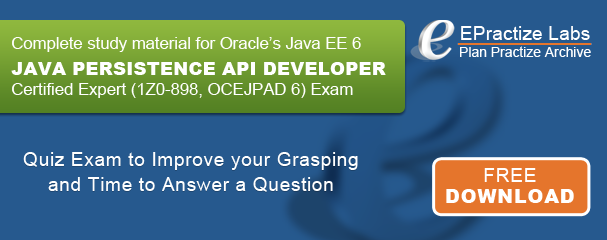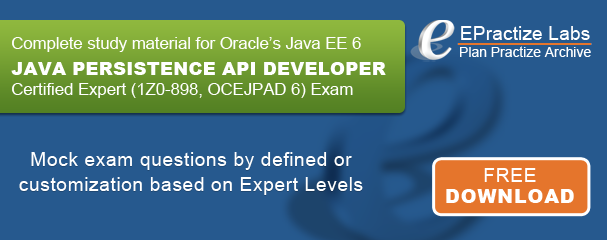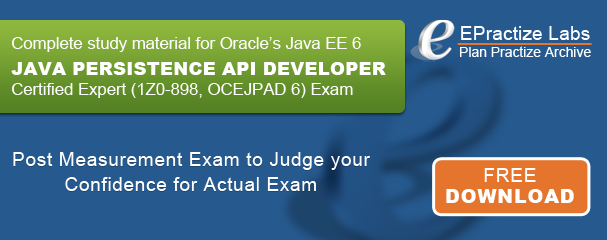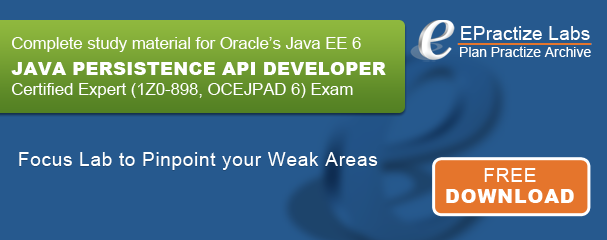| Given the following code snippet of an EJB 3.0 entity class: |
10. @Entity
11. @Table(name="EPL_TEST")
12. public class Test { .... }
|
You need to change the name of the database table for the Order entity from EPL_TEST to TEST, without changing the Java source code file. |
Select the best option to change table name from EPL_TEST to TEST |
| Choice 1 | Override the name using the table sub element within the persistence unit's persistence.xml file. |
| Choice 2 | This is NOT possible in a portable EJB 3.0 application. The only way to change the table name is to change the Java source code file. |
| Choice 3 | Add a custommapping.xml file to the persistence unit, override the name using the table sub element, and declare custommapping.xml in the mapping-file element in orm.xml. |
| Choice 4 | Add a custommapping.xml file to the persistence unit, override the name using the table sub element, and declare custommapping.xml in the mapping-file element in persistence.xml. |

